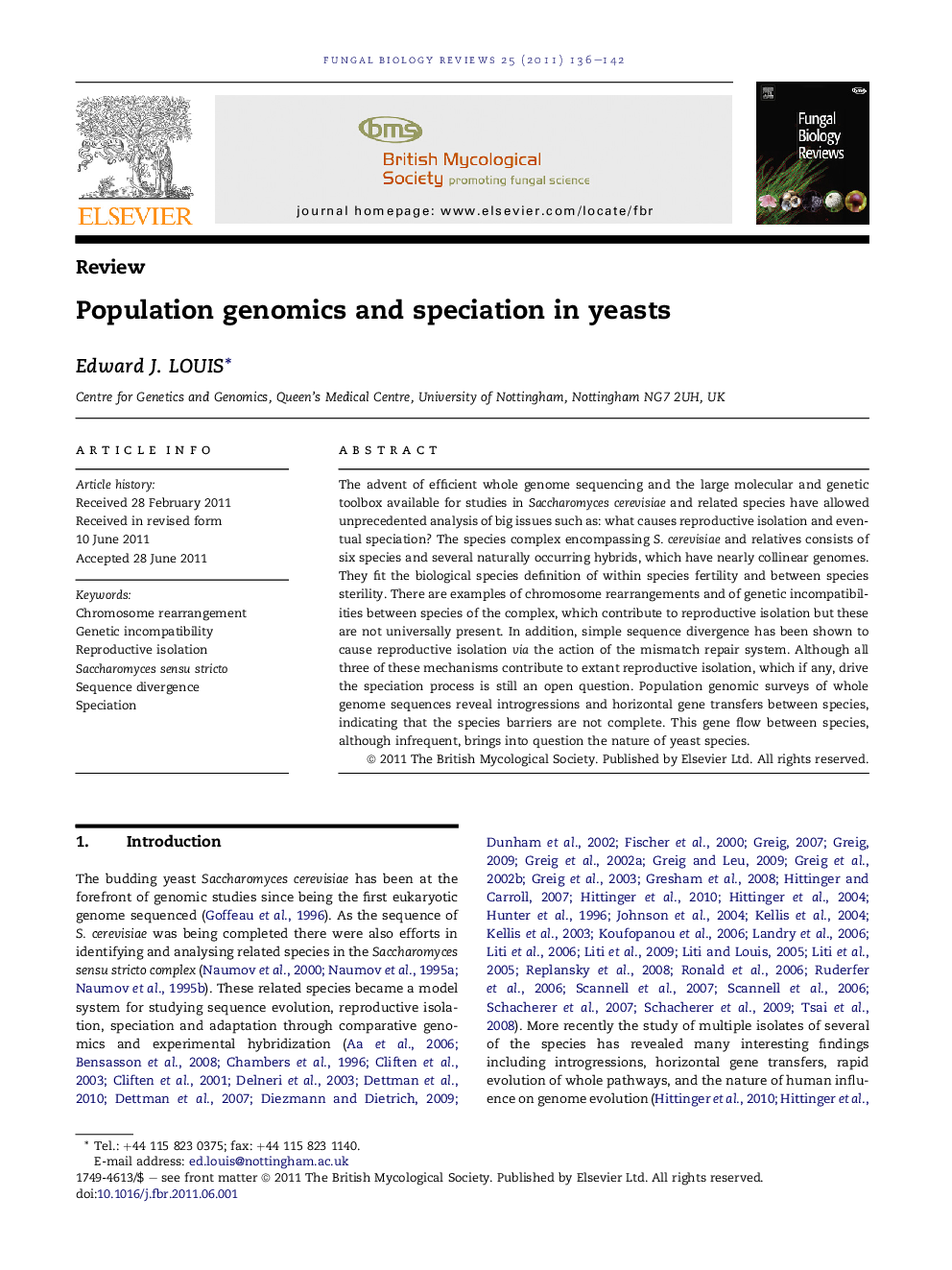| Article ID | Journal | Published Year | Pages | File Type |
|---|---|---|---|---|
| 2180560 | Fungal Biology Reviews | 2011 | 7 Pages |
The advent of efficient whole genome sequencing and the large molecular and genetic toolbox available for studies in Saccharomyces cerevisiae and related species have allowed unprecedented analysis of big issues such as: what causes reproductive isolation and eventual speciation? The species complex encompassing S. cerevisiae and relatives consists of six species and several naturally occurring hybrids, which have nearly collinear genomes. They fit the biological species definition of within species fertility and between species sterility. There are examples of chromosome rearrangements and of genetic incompatibilities between species of the complex, which contribute to reproductive isolation but these are not universally present. In addition, simple sequence divergence has been shown to cause reproductive isolation via the action of the mismatch repair system. Although all three of these mechanisms contribute to extant reproductive isolation, which if any, drive the speciation process is still an open question. Population genomic surveys of whole genome sequences reveal introgressions and horizontal gene transfers between species, indicating that the species barriers are not complete. This gene flow between species, although infrequent, brings into question the nature of yeast species.
► Species barriers in Saccharomyces sensu stricto yeasts are incomplete. ► Sequence divergence and mismatch repair are the major isolation mechanism. ► Introgressions and horizontal gene transfers are revealed by whole genome comparison.
